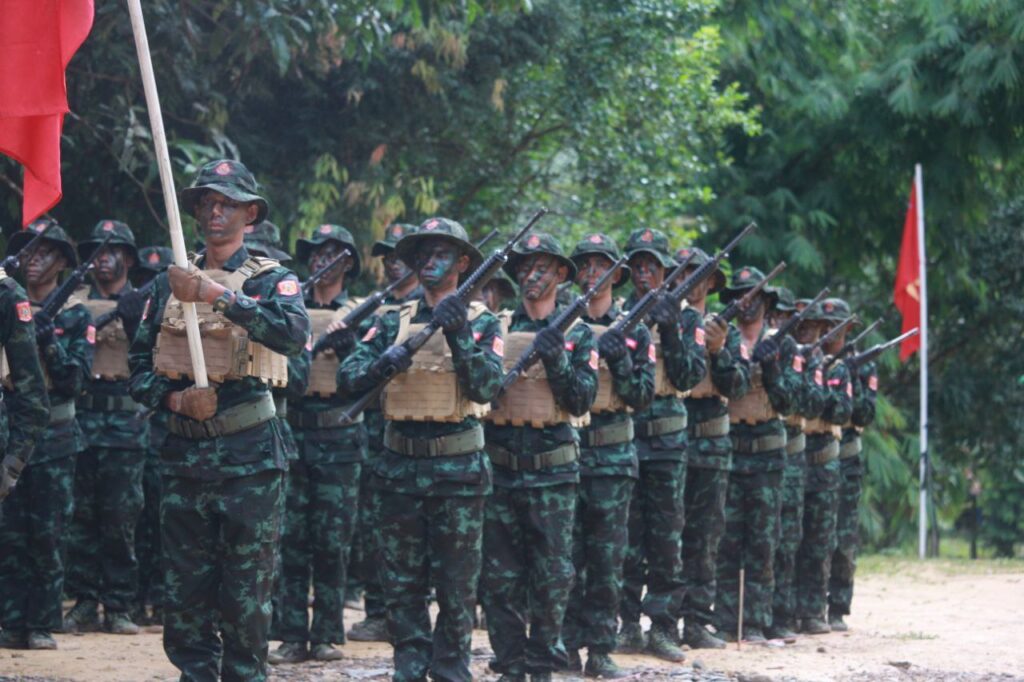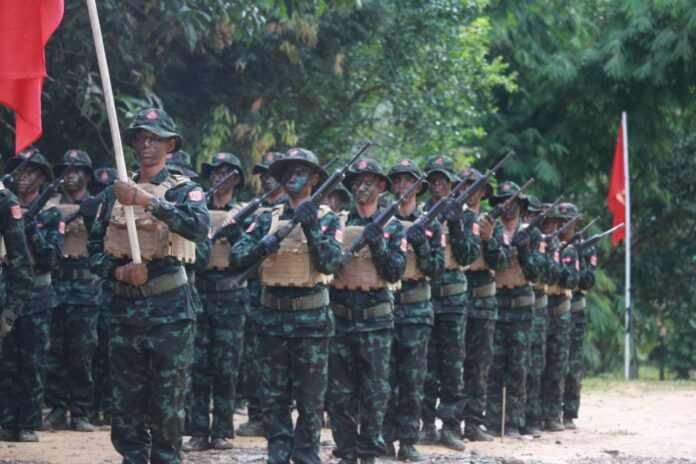Military activities by the Mon revolutionary armed groups have become stronger this year compared to previous years, according to a military analyst focused on Mon areas.
Although the level of combat is not yet as intense as in some other regions, military resources and strength have grown to a certain extent, forcing junta troops to deploy hundreds of soldiers in their operations, he explained.

“In my view, if we assess the current situation based on the overall revolutionary strength and operations, Mon areas have become stronger militarily. In recent months, revolutionary alliances in Mon State and nearby areas, such as the Mon-Tanintharyi border zones, have been able to launch numerous battles—big and small—and achieved successes. The enemy had to use hundreds of troops to conduct offensives. Even during the rainy season, clashes continued. So, while the level of strength is not yet equal to other regions in terms of military resources and forces, there is improvement compared to before, and this must be acknowledged,” said the military analyst.
He also noted that Mon armed groups still face the challenge of working collectively, stressing that to achieve greater success and secure full public support, they must form a united Mon allied force.
To effectively fight against the military dictatorship, the Mon Liberation Front (MLF) and the New Mon State Party (Anti-Dictatorship)/Ramanya Mon Army (NMSP-AD/RMA) announced on September 18, 2025, that they had merged.
The NMSP-AD/RMA also stated it would continue efforts toward the emergence of a single, united Mon army.
At the same time, Mon groups still lack sufficient weapons and ammunition, and discussions must continue about unifying into one Mon army, said Lieutenant Yan Naing, spokesperson of the Yebyu People’s Defense Force (YPDF).
“In Mon State, there are many Mon armed groups. Politically, under the current Mon Federal Council, Mon State is treated as one unit,” he added. “The council is working on this. For the revolution to succeed, unity is crucial. We are working hard to achieve that unity. On the ground, some forces are already merging and cooperating under alliances. But the formation of a single Mon army is still something we need to continue discussing.”
The Independent Mon News Agency attempted to contact other Mon revolutionary groups for their views on the possibility of stronger military operations and the unification of a Mon army, but no replies have been received yet.
At present, clashes are taking place between junta forces and revolutionary groups in Thanbyuzayat, Ye Township areas, along the Mudon–Chaung Hna Khwa–Kyaikmayaw road, and in Mon-Tanintharyi border areas.
Reflections on the current state of play to junta forces extends to those who are outside of the country. A Mon youth studying at a university in Thailand remarked that the strengthening of military activities in Mon areas depends largely on people’s trust in and participation in the revolution.
The military analyst continued that “I think it’s partly due to geography and partly due to the ideology of the Mon people. Geographically, cooperation with neighboring allies is very important. But it also depends on how much the Mon people believe in this revolution and how much they participate.”
It is reported that, currently, heavy junta offensives are underway in the southern regions, leading to ongoing clashes with revolutionary forces.

